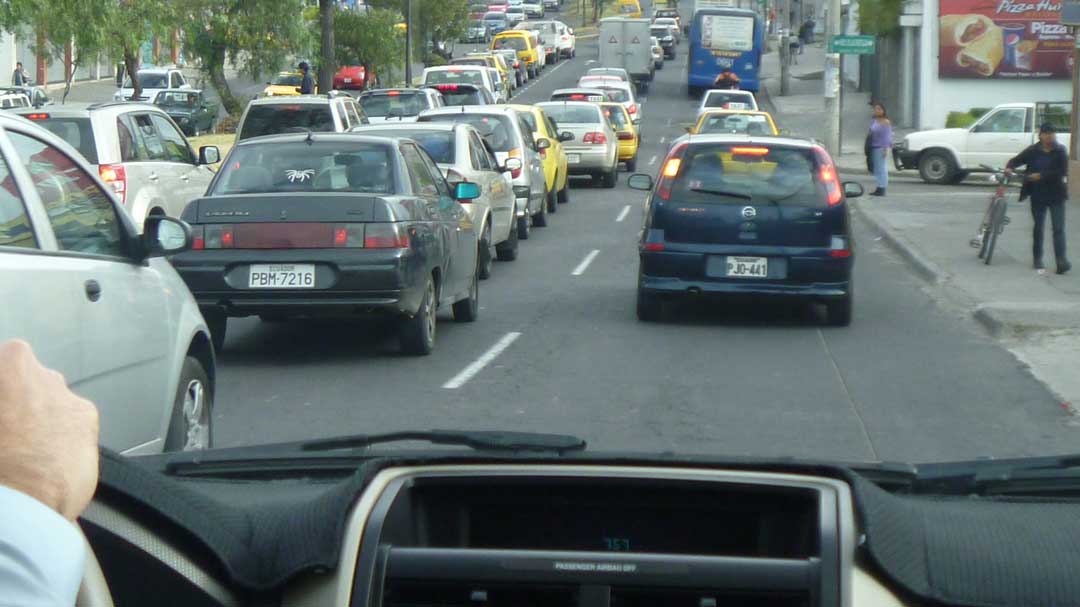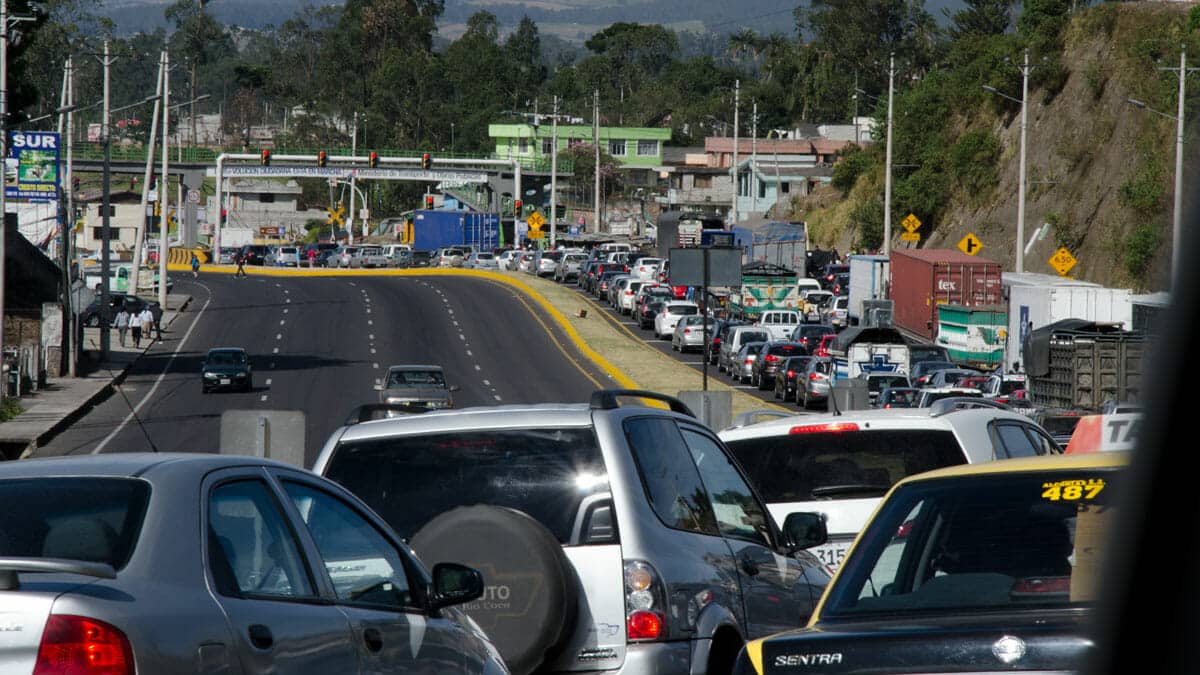A few of weeks ago our car arrived. I had been dreading its arrival as much as I had been anticipating it. Driving in Quito gives me a level of freedom that traveling by taxi or by public transportation does not. And it makes it a lot easier to bring home the groceries!
Driving in Quito is Stressful!
But the truth is that driving in Quito is stressful. My husband says it isn’t any more difficult than driving in Washington DC. Sometimes I’m tempted to agree with him. However, he has driving experience in some of the wildest countries in the world: Turkey, Qatar, and Afghanistan. He honed his aggressive driving technique in places where laws are merely suggestions.
I’ve honed only defensive driving skills in cities like Washington DC, San Francisco, and Stuttgart, Germany. I’ve allowed the more aggressive-side of my driving nature to be left behind with my teenage self.
Defensive Driving in Quito Gets You Nowhere
Unfortunately, defensive driving in Quito gets you nowhere. A defensive driver like myself might get stuck at an intersection for hours at a time. If it weren’t for the folks behind me honking their horns or ever so politely getting closer and closer to my back bumper, I might never move. Or, they might just jump to the chase and go around my car, traffic from the other direction be damned.
Therefore, I am learning to drive a little differently. My husband recommended that I revert to being 17 years old again and drive like a teenager. It’s good advice.
I’ve learned to accelerate to pass other cars like they’re standing still. You never want to get stuck in a lane with slow cars.
I’ve learned when stuck in slow-moving traffic to turn the nose of my vehicle into the neighboring lane in order to make a place for my car. There is a general rule of thumb: the car in front, no matter by how few inches, has the right of way. It’s pretty expected here and most people don’t get upset when you commit this kind of lane creeping. However, if you don’t commit and you only edge over a little bit, look out! They’ll just drive right by, coming mere centimeters within hitting your vehicle.
Time of Day Makes All The Difference
The rhythm of driving changes here depending on the time of day and the day of the week.
The calmest day is Sunday. If you’re learning to navigate the city, this is the day with the least amount of traffic. It makes it easier to concentrate on street signs and new traffic patterns and to take a swing around all the different traffic circles just to get a feel for them.
On the other hand, on weekdays those same traffic circles are chock-a-block with vehicles of every kind – taxis, city buses, small trucks, and just your regular old cars. Right-of-way goes to those already in the circle. If you don’t know how to maneuver in, well, back to folks honking their horns or just passing you by.
I promise – I’ll move forward when it’s safe
Which brings me back to defensive driving all over again.
I guess when it comes to driving in Quito, I’ll continue to let other drivers press their advantage, to give huge leeway to those that have children in their cars, and to be the person that stops and allows a car to turn left in front of me. I’m not in as much a hurry as they are.
Do me a favor, if you’re driving on the road behind me, give me a break and don’t honk the horn right away. I promise – I’ll move forward when it’s safe.

















0 Comments